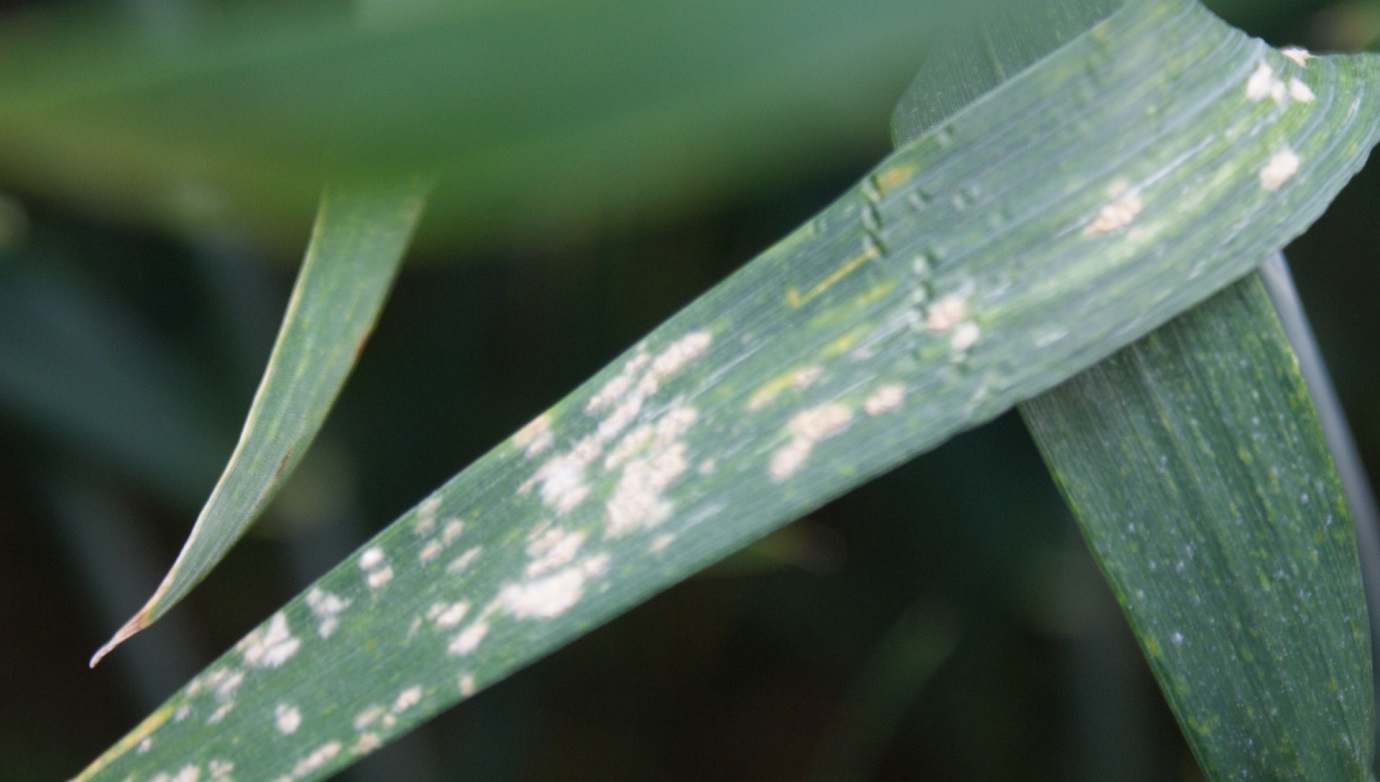Powdery mildew in oats
Powdery mildew can affect both winter and spring sown oats. The disease, produces a white fluffy fungal growth on the leaf surface. This can cause leaves to turn yellow, leading to a loss in green leaf. High levels of disease at an early crop growth stage can kill out tillers.
The disease is known as a biotroph which means it requires a living host to survive. A typical symptom of powdery mildew is white fluffy superficial fungal growth on the surface of leaves, stems and ears. Fungal spores which develop from these lesions are spread to other plants via the wind. The ideal infection conditions are mild and humid. Very wet conditions can limit the spread of the spores.
The disease can also overwinter in crop trash in black fungal bodies known as cleistothecia. Cereal volunteers are another method of survival. The "Green Bridge" allows powdery mildew to spread from a winter-sown crop in the autumn to the spring sown crop in the spring, to late-developing volunteers before infecting the following winter crop.
Visit our Crop Health Updates webpage for montly, timely information about pests & diseases in crops

Sign up to the FAS newsletter
Receive updates on news, events and publications from Scotland’s Farm Advisory Service
